| |
 |
| |
| Spotted this while walking down The Street Goyt Valley [SJ 999 763 - Elev: 439 metres] on Route 12, a chilly 11 degrees but this one was feeding, then moving and feeding and moving ... endlessly as they do. Late season and hardy. This actually the smallest UK Dragonly. Not rare we are told but they do seem localised. They turn up in my experience all over moors in very wet areas, vernal / ephemeral pools. See also the Common Darter with similar habits: October 15th. |
| |
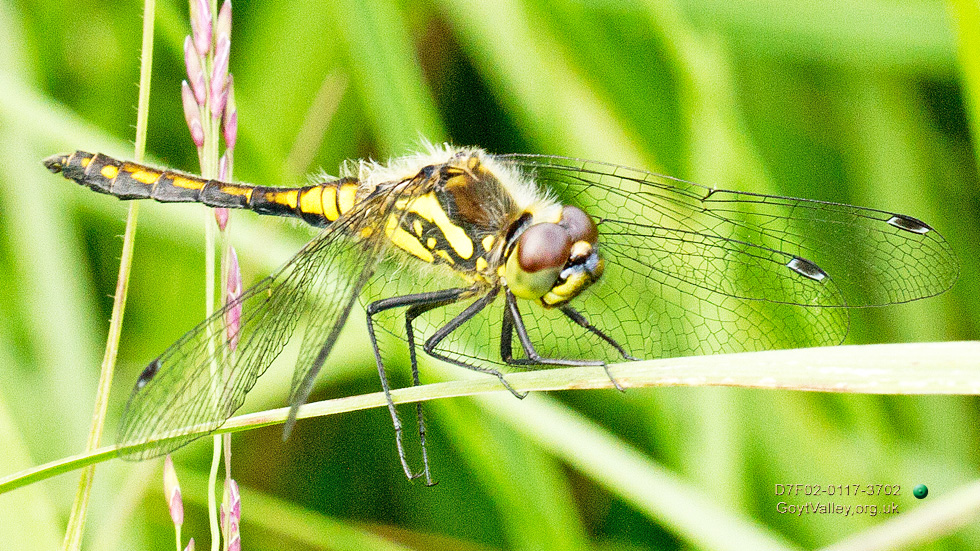 |
| |
| July 30th. |
| |
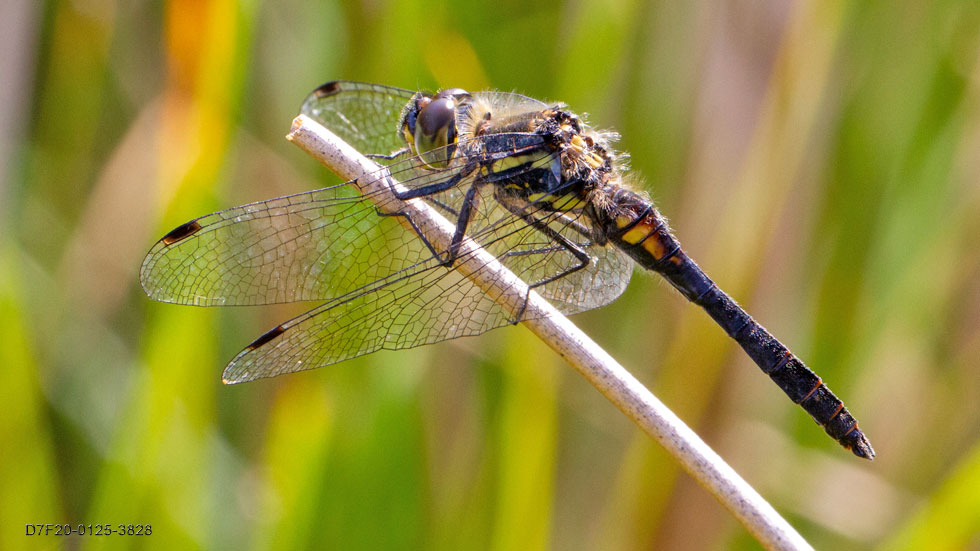 |
| |
| Close to The Pond (Pond Number One): August 23rd. |
| |
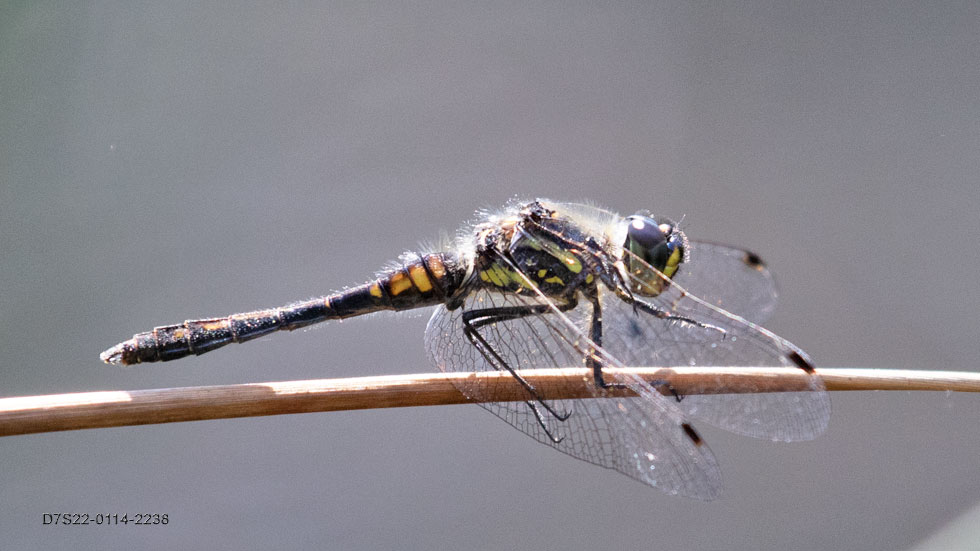 |
| |
| A poor image but a significant find. These were seen at Pond Number Five (see route two) which is well concealed in a depression off the Hoo Moor trail. It is a seriously boggy area (care needed) even on this mega hot day. The area is dark because of overhanging trees and bordered by ferns and fallen timber. The water is seriously turbid and dark grey (hence the poor image). That said a couple of these male Black Darters and two Hawkers (unknown) were also resident on the day. Not a pond ordinarily on the list for seasonal visits. Curiously no sign of any Damselflies which are ordinarily seen everywhere and are more tolerant of weather extremes than Dragonflies. Roll mouse pointer over above image to see the pond itself. Tap the image on a smart phone. It is a much darker area than the image suggests. Only a short distance as the crow flies to the top image site which I had wondered about: August 12th. 2022 |
| |
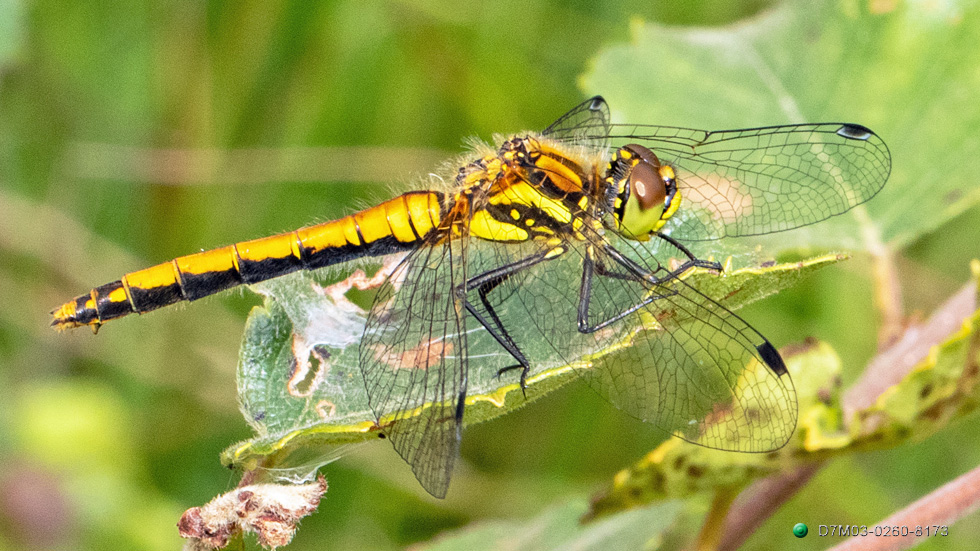 |
| |
| Female: August 20th. |
| |
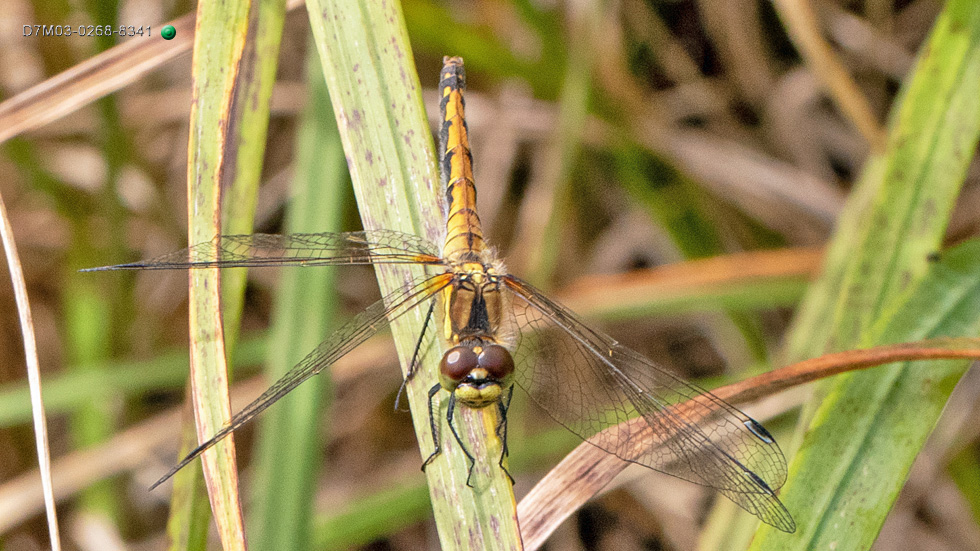 |
| |
| Female. Note the distinctive black triangle behind the head which is diagnostic: September 9th. |
| |
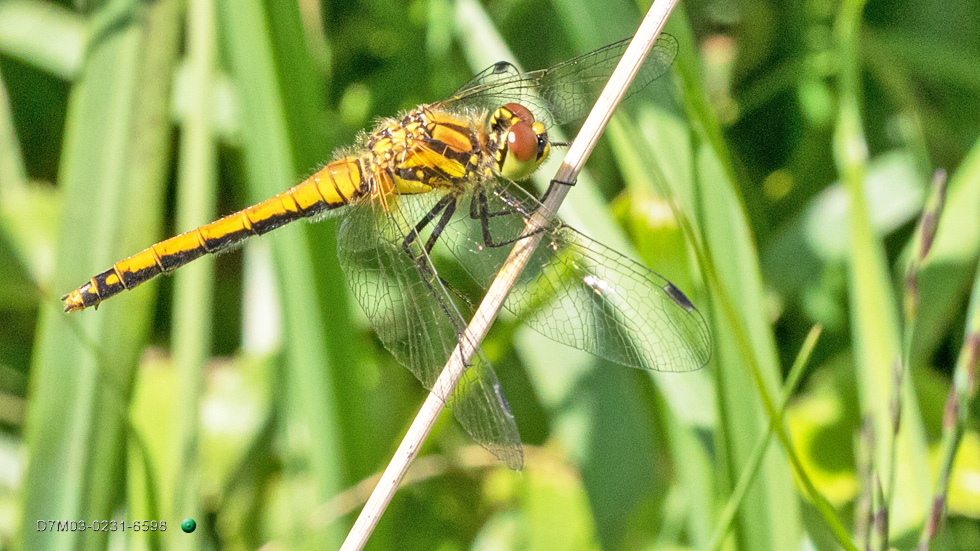 |
| |
| Nice female setting: July 2nd. |
| |
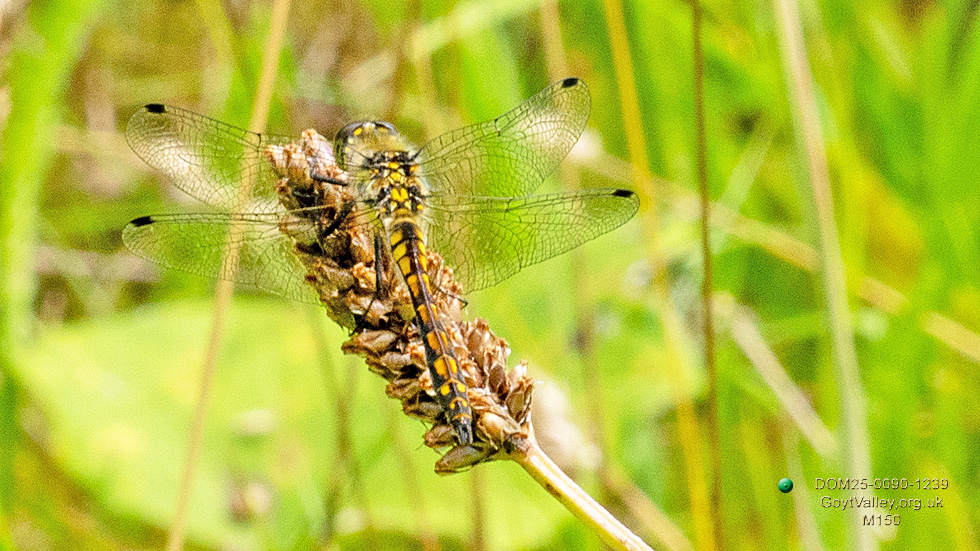 |
| |
| My first sighting of a Black Darter at Buxton Lightwood and this one a female. Very close to the ground and almost invisible to the naked eye when resting on Ribwort Plantain as this is. Only spotted it when it relocated as Darters usually do frequently: July 25th. 2025 |
| |
| Top |
| |

